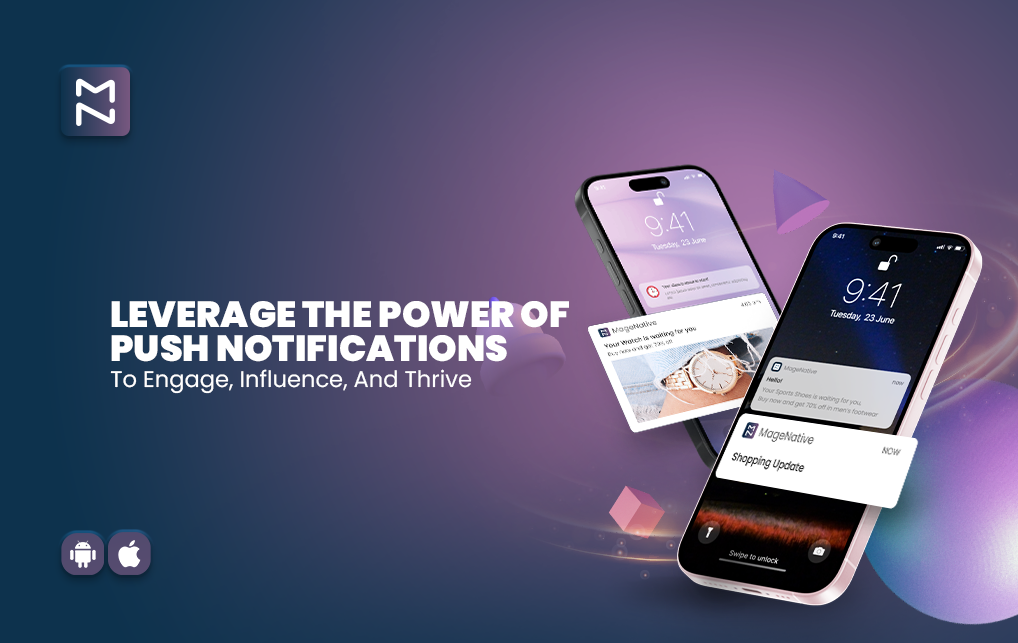Understanding Push Notification Metrics: What to Track and Why It Matters
 Anusha Ansari
Anusha Ansari
Push notifications have become a crucial tool for Shopify merchants, allowing them to engage customers, drive sales, and enhance their overall shopping experience. However, to leverage push notifications effectively, it’s essential to understand and track the right metrics. In this post, we’ll explore key push notification metrics, explain their importance, and provide real-world examples to help you optimize your strategy.
Delivery Rate
Delivery rate measures the percentage of push notifications that successfully reach users’ devices out of the total sent. This metric is critical because it indicates how effectively your notifications are being delivered to your audience. For instance, if you’re running a holiday promotion and your delivery rate is only 70%, it means 30% of your intended recipients aren’t seeing your offer, possibly due to expired user tokens or incorrect information.
Example: Imagine you’ve just launched a new collection and send out push notifications to announce it. If the delivery rate is low, it could mean that some users have outdated app versions or have opted out of receiving notifications. To address this, you might need to update your user database or encourage users to re-enable notifications.
Open Rate
Open rate is the percentage of delivered notifications that are actually opened by users. This metric is vital for assessing the effectiveness of your notification content and timing. A high open rate suggests that your messages are engaging and relevant to your audience, while a low rate may indicate that your notifications need to be more compelling.
Example: You send a notification about a limited-time discount on your best-selling products. If the open rate is high, it means your audience is interested in your offer. Conversely, a low open rate might suggest that the headline or timing of your notification needs adjustment. Testing different headlines or sending notifications at different times could help improve this rate.
Click-Through Rate (CTR)
Click-through rate (CTR) measures the percentage of users who click on a link or call-to-action within your push notification. This metric is crucial for understanding how well your notifications drive user actions, such as visiting your store or checking out a new product. A high CTR indicates that your notifications are prompting users to engage further.
Example: Suppose you send out a push notification promoting a flash sale with a direct link to the sale page. If you see a high CTR, it means users are not just opening your notifications but also clicking through to explore the sale. A low CTR might suggest that your call-to-action or offer isn’t enticing enough, and you might need to refine your messaging or include a more compelling offer.
Conversion Rate
Conversion rate tracks the percentage of users who complete a desired action after interacting with your push notification, such as making a purchase or signing up for a loyalty program. This metric helps you measure the direct impact of your notifications on your business goals. A high conversion rate means your notifications effectively drive valuable actions.
Example: You send a push notification offering a discount on first-time purchases. If the conversion rate is high, it indicates that users who received the notification are completing purchases. If the conversion rate is lower than expected, you may need to reevaluate the offer or its presentation to better motivate users to act.
Unsubscribe Rate
Unsubscribe rate shows the percentage of users who opt out of receiving push notifications after receiving one. A high unsubscribe rate can indicate that your notifications are perceived as intrusive or irrelevant. Monitoring this metric helps you adjust your approach to ensure that you’re not overwhelming users.
Example: After initiating a new series of promotional notifications, you notice an increase in the unsubscribe rate. This may suggest that users are receiving too many notifications or that the content isn’t meeting their expectations. To improve this, consider reducing the frequency of notifications or making them more relevant to user interests.
Engagement Rate
Engagement rate measures how actively users interact with your push notifications, including actions such as clicks, visits, and other engagements. This broader metric provides insights into how well your notifications engage users beyond just opening them.
Example: If you send a notification about a new product launch, a high engagement rate means users are actively exploring the product and possibly making purchases. A low engagement rate might indicate that the notification didn’t resonate well, and you might need to enhance your messaging or include additional incentives.
Bounce Rate
Bounce rate refers to the percentage of push notifications that fail to be delivered due to issues like expired tokens or invalid user data. A high bounce rate indicates potential problems with your notification system or user database.
Example: If you’re running a promotional campaign and encounter a high bounce rate, it may mean that a significant portion of your notifications aren’t reaching users. Addressing this issue could involve updating your user data and ensuring that your notification system is functioning correctly.
Also read: Reduce Mobile App Cart Abandonment Up to 70% Using Push Notification
Optimizing Your Push Notification Strategy
To make the most of these metrics, here’s how you can use them to optimize your push notification strategy:
Analyze Performance Trends: Regularly review your metrics to spot trends and identify areas for improvement. For example, if open rates drop at certain times, consider adjusting your sending schedule.
A/B Testing: Experiment with different versions of your notifications, such as varying headlines or calls-to-action, to see what resonates best with your audience.
Segment Your Audience: Tailor your notifications based on user behavior and preferences. For instance, send personalized offers to loyal customers and different promotions to new users.
Refine Your Content: Use insights from open rates and CTR to craft more engaging and relevant messages. Experiment with different content formats and offers to see what drives the best results.
Adjust Frequency: Find the right balance between sending notifications frequently enough to stay top-of-mind and avoiding overwhelming users. Monitor unsubscribe rates to guide your frequency decisions.
Monitor and Improve: Continuously track your metrics to refine your strategy. Use data-driven insights to make informed decisions and enhance your push notification effectiveness.
Also read: The Power Of Push Notifications: Reaching Your Customers With Precision
Conclusion
For Shopify merchants, understanding and tracking push notification metrics is essential for driving customer engagement and achieving business goals. By focusing on key metrics like delivery rate, open rate, CTR, and conversion rate, you can gain valuable insights into your notification performance and optimize your strategy for better results. Start monitoring these metrics today and unlock the full potential of your push notifications to elevate your Shopify store’s performance.
Also read: The Winning Push Notification Strategies for Maximizing Mobile App Engagement
Subscribe to my newsletter
Read articles from Anusha Ansari directly inside your inbox. Subscribe to the newsletter, and don't miss out.
Written by
